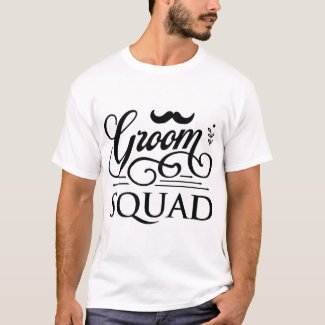We see a lot of our customers buying insoles. They have many
different reasons for doing so, and each reason demands a different sort of
product. Below are our top reasons to buy insoles and specific recommendations
for each concern.
Plantar Fasciitis / Arch Pain
If you're suffering from foot arch pain due to plantar
fasciitis or other problems, the answer is often a well-cushioned orthotic arch
support. The best choices here are foam orthotic supports that offer either a
rigid or semi-rigid footbed. We recommend semi-rigid arch supports for
first-time buyers. These deliver a good blend of support, comfort, and
flexibility. Rigid orthotic arch supports are ideal for experienced orthotic
users who are looking for maximum support. Extra layers of foam are great for
alleviating pain as long as you have room for them in your shoes. If your shoes
are tight-fitting, try a low-profile insole for compact relief. To learn more
about the best insoles for arch pain and plantar fasciitis, check out our Plantar Fasciitis Shoes and Insoles page.
Over-Pronation
Pronation is the technical term for the natural tendency of
the feet to roll inward when you step forward. When the feet roll too far
inward, the result is over-pronation. This may cause foot pain and a lack of
stability. An orthotic arch support, either semi or fully-rigid, can help
correct over-pronation by keeping the foot properly aligned. The right
orthotics deliver support to both the heels and arches, and this will reduce or
eliminate over-pronation. We suggest semi-rigid orthotics for first-time users.
Rigid orthotic arch supports are best for buyers who are looking for the
strongest possible support.
Extended Standing
When professional duties or other demands keep you standing
for extended periods, you may develop foot pain. One effective solution to this
problem is wearing a cushioned arch support for gentle support all day long. Cushioned arch supports reduce pressure on all
parts of the foot. Foam insoles are especially good for reducing standing pain.
You can find a complete list of insoles that help with pain from standing on
our Insoles for Standing page.
Morton's Neuroma
Morton's Neuroma is a condition that manifests
itself through sharp, tingling, or burning pains in the forefoot. The source of
the pain is having a nerve in the area that is being compressed or irritated.
If you have problems with Morton's Neuroma, forefoot padding can relieve the
pressure being placed on your forefoot. Insoles and inserts that include
metatarsal pads can be helpful in this area. Our Morton's Neuroma page has more
details and a complete list of inserts and insoles that can help relieve the
pain.
Metatarsalgia / Pain In The Ball Of The Foot
If you're experiencing pain in your forefoot from
metatarsalgia or similar conditions, try an insole that includes good top-coat
cushioning and a metatarsal pad. Cushioned arch supports often fit the bill. We
find many customers can also benefit from added support. In these cases, a
semi-rigid or rigid support can help. To relieve pain in the balls of your feet
and pain caused by metatarsalgia, see the full insole list on our Metatarsal
Insoles & Inserts page.
Morton's Toe / Hallux Rigidus / Hallux Limitus
Morton's Toe and the Hallux conditions (Rigidus and Limitus)
can cause pain through unwanted toe flexing. You may find a stiff insole that
prevents toe flexing to be very helpful. Most shoes have flexible toe-boxes
that allow unwanted flexing. The right insoles can significantly reduce the
amount of flex allowed or even eliminate it entirely. We've highlighted
flex-reducing products that work with your existing insoles on our page for
Morton's Toe, Hallux Rigidus, and Hallux Limitus.
Supination
Supination is also known as under-pronation. It happens when
your feet roll too far outward when you walk. The foot's natural tendency is to
roll inward slightly with each step. An outward roll of the foot can produce
discomfort and/or pain. You can stop supination by using a semi-rigid or rigid
orthotic arch support. These orthotics deliver constant support to preserve
healthy foot alignment. Orthotic arch supports correct supination by delivering
support to both the heels and the arches. This discourages supination.
First-time orthotic wearers should start with a semi-rigid orthotic. Fully
rigid orthotic arch supports are suitable for those who need the most
aggressive levels of arch support.
Running / Walking / Shin Splints
People who experience shin splints or those who do
significant amounts of running and walking need insoles that can handle
support, flexibility, and shock absorption. Cushioned arch supports and
semi-rigid orthotic arch supports can both do the job. Insole construction
matters a great deal here. You need either an all-gel product or one that has
significant gel padding on both the forefoot and the heel. An appropriate
support insole will deliver the flexibility you need for varied activity. The
insole's gel material works to absorb impact shocks and prevent fatigue damage
to the knees and feet. See our Walking & Running Insoles page for a range
of specific products suitable for use in these situations.
Diabetes / Arthritis
Diabetes and arthritis sufferers need insoles designed to
safeguard their feet. The right insoles will not only cushion the everyday
shocks your feet are subjected to but also encourage healthy circulation and
feature maximum comfort. In order to address the specific features needed in a
good diabetic or arthritic insole, we've listed all of the suitable products
separately on our Diabetic and Arthritic Insoles page.
Heel Spurs / Heel Pain
If you have heel pain arising from heel spurs or other
conditions, the right insole for you is one that delivers lots of cushioning on
the heel of the foot. Many products match this description, including both
full-length and 3/4-length insoles. There are even heel insert pieces that can
relieve heel pain. To learn more, review the products listed on our page on
Insoles and Inserts for Heel Spurs and Heel Pain.
Disclosure: This is a contributed post.













No comments:
Post a Comment